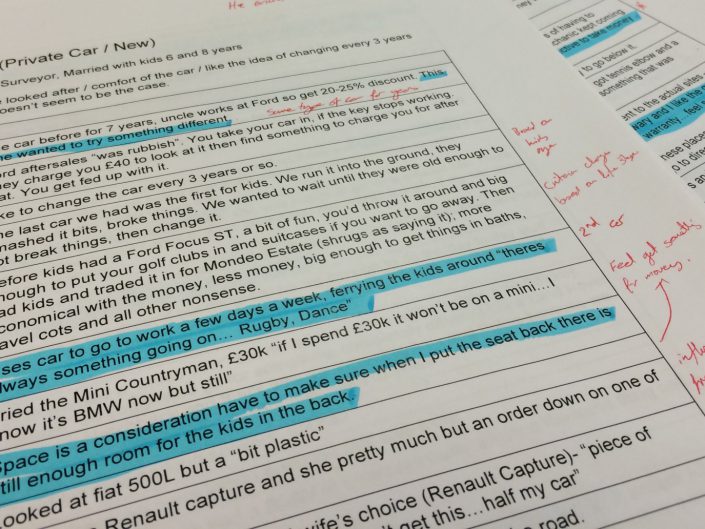Revisiting Audi's Navigation
Like a large number of commercial sites, Audi.co.uk had grown organically over a number of years, but with no clear content strategy it had quickly become disorganised. Content was being categorised based on business unit and a lack of ongoing housekeeping meant that the site featured a lot of content ROT. All of this contributed to a desire, both from Audi and from ourselves, to revisit the Global Navigation.
To produce a proposal for a new navigational structure I conducted a number of exercises. The first was a look at how the Global Navigation was used at the time via the onsite analytics, not only did this help us identify which areas had little value, it also helped to highlight the high value ones; after all we didn’t want to get rid of what was working just to ‘make our mark’.
Another valuable input was the search queries from the sites internal search function. Search queries are a fantastic window into the soul, we type our deepest, darkest fears and desires into search engines and they gave us a fantastic insight into what customers were actually looking for when visiting the site. We focused on the head as opposed to the long tail for this exercise and after a quick look at the 300 most popular search terms, we identified a key area which, at the time, was not addressed anywhere in the navigation…
As a qualitative input, I took the Global Header Navigation and Footer options as they stood at the time and conducted an open card sorting exercise. I used loose criteria when recruiting participants because whatever we proposed needed to be logical irrespective of a customers affinity with the brand or the stage they were at in the purchasing lifecycle.
All of this helped me provide a suggestion of what I believed the navigation should be, but ultimately this was solely based on my interpretation of the data, so the next step was to validate the proposal.
To quantitatively validate the new taxonomy and labelling changes, we conducted a round of online Tree Testing which is a technique for evaluating the findability of topics in a website. It’s also known as ‘reverse card sorting’ or ‘card-based classification’. This was done using an online tool and a simplified text version of the site structure – without the influence of navigation aids and visual design. Participants were recruited via email from Audi’s own mailing list and we received a phenomenal 81% completion rate with over 1,000 people completing all the set tasks (although I’d like to take credit for this, this was probably due to the Audi Silverstone Driving Experience that was offered as an incentive).
After a few minor tweaks based on the Tree Testing results, the new navigation was implemented and based on the sites KPI’s, it was considered a success.
All Audi Projects
Some other projects you might be interested in
Alternatively, if you’d prefer to discuss how I can help with your project, feel free to get in touch.












